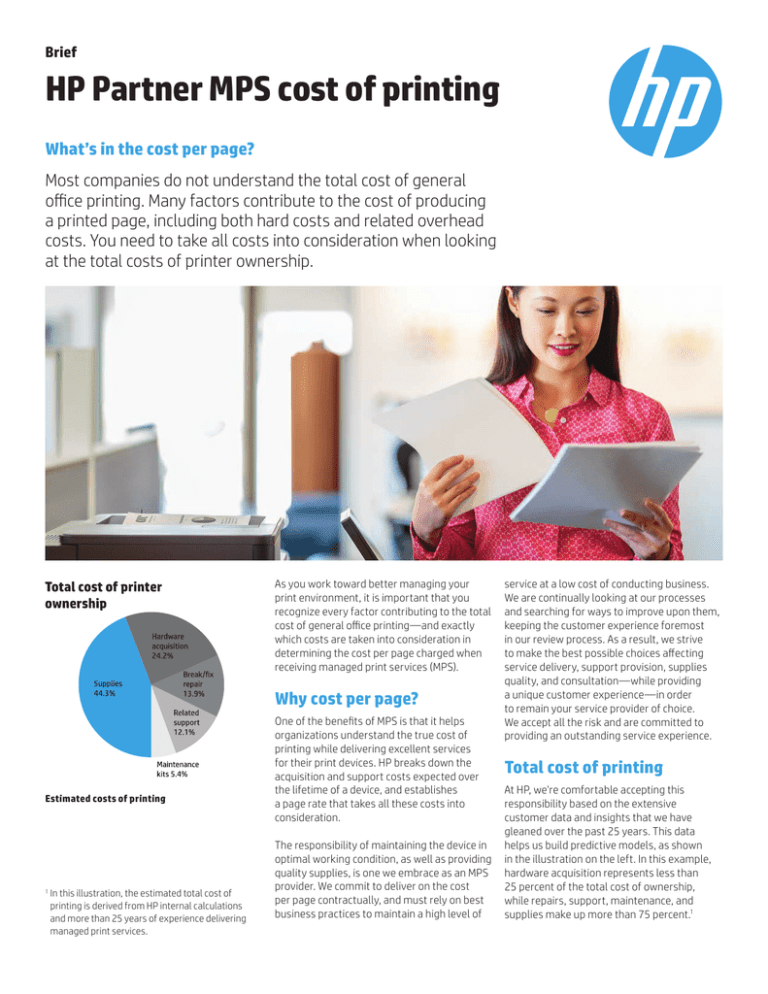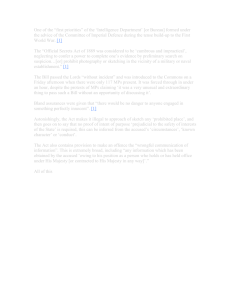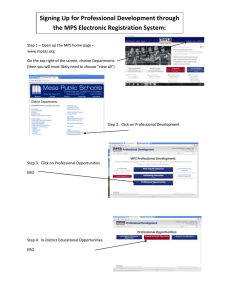HP Partner MPS Cost of Print brief
advertisement

Brief HP Partner MPS cost of printing What’s in the cost per page? Most companies do not understand the total cost of general office printing. Many factors contribute to the cost of producing a printed page, including both hard costs and related overhead costs. You need to take all costs into consideration when looking at the total costs of printer ownership. As youcost work toward better managing your Total of printer print environment, it is important that you ownership recognize every factor contributing to the total cost of general office printing—and exactly which costs are taken Hardware into consideration in acquisition determining the cost per page charged when 24.2% receiving managed print services (MPS). Supplies 44.3% Break/fix repair 13.9% Why cost per page? Related Estimated costs of printing 1 In this illustration, the estimated total cost of printing is derived from HP internal calculations and more than 25 years of experience delivering managed print services. One of the benefits of MPS support is that it helps 12.1% organizations understand the true cost of printing while delivering excellent services for their print devices. HP breaks down the Maintenance 5.4%expected over acquisition and supportkits costs the lifetime of a device, and establishes a page rate that takes all these costs into consideration. The responsibility of maintaining the device in optimal working condition, as well as providing quality supplies, is one we embrace as an MPS provider. We commit to deliver on the cost per page contractually, and must rely on best business practices to maintain a high level of service at a low cost of conducting business. We are continually looking at our processes and searching for ways to improve upon them, keeping the customer experience foremost in our review process. As a result, we strive to make the best possible choices affecting service delivery, support provision, supplies quality, and consultation—while providing a unique customer experience—in order to remain your service provider of choice. We accept all the risk and are committed to providing an outstanding service experience. Total cost of printing At HP, we're comfortable accepting this responsibility based on the extensive customer data and insights that we have gleaned over the past 25 years. This data helps us build predictive models, as shown in the illustration on the left. In this example, hardware acquisition represents less than 25 percent of the total cost of ownership, while repairs, support, maintenance, and supplies make up more than 75 percent.1 Brief | Total cost of printing Unit price Pages Cost/ page $120/ 9,600 = $0.0125 Maintenance kit $302/ 160,000 = $0.0019 Maintenance labor $320/ 160,000 = $0.0020 Parts $105/ 50,000 = $0.0021 Labor $118/ 50,000 = $0.0024 Toner handling $8/ 9,600 = $0.0008 Invoicing $10/ 12,500 = $0.0008 IT/help desk $7/ 2,700 = $0.0026 Toner costs Maintenance costs Repair costs Total hard costs: $0.0209 Related costs Total related costs: $0.0042 Total costs (hard + related) $0.0251 MPS per-page cost $0.0194 Hard cost savings: 7% Estimated total savings: 23% Breakdown of printing costs Cost breakdown To carry this illustration further, a cost-perpage breakdown in the table to the left leverages data from an HP LaserJet printer in the 4000 series and uses customer data on toner, maintenance and repair costs to document the hard costs of supporting this device. We also used historical customer data to calculate the time required to perform related support tasks, such as supplies inventory management (“Toner handling”), processing of a an invoice from a vendor (“Invoicing”) and IT help desk support to exchange a toner cartridge or to alleviate a paper jam (“IT/help desk”). The unit costs provided in this example result from an applied algorithm to determine the amount of time and the related cost of each of these tasks as it relates to producing a single printed page from the device. In the example provided (left), the Estimated total savings is a percentage resulting from applying your costs (actual and related costs) to the cost per page we would charge to provide MPS for this device. Independent analyst research suggests a savings of up to 30 percent on internal printing costs could be expected when deploying MPS.2 The example in the table shows that a 23 percent overall savings would be delivered under an MPS contract. This type of data is similar to what we can provide your organization in an MPS proposal. 2 IDC MarketScape: Worldwide Managed Print and Document Services 2014 Vendor Assessment – Focus on Managed Workflow Services, September 2014, ID #250631. Gartner, “Magic Quadrant for Managed Print and Content Services, Worldwide,” November 6, 2014, ID Number G00260810. Gartner does not endorse any vendor, product or service depicted in its research publications, and does not advise technology users to select only those vendors with the highest ratings or other designation. Gartner research publications consist of the opinions of Gartner’s research organization and should not be construed as statements of fact. Gartner disclaims all warranties, expressed or implied, with respect to this research, including any warranties of merchantability or fitness for a particular purpose. Sign up for updates hp.com/go/getupdated Why we need your actual costs Our ability to provide your organization with an accurate representation of your total cost of printing is dependent on understanding your actual costs for purchased supplies and break-fix services over the past several months. You will be asked to provide these actual costs during the discovery period as we work together to better manage your print environment. Doing so will better enable us to pinpoint an accurate percentage of potential savings once you initiate MPS services. Industry standards can be used to support the process; however, our experience has Share with colleagues shown that organizations are more interested in seeing calculations based on actual costs rather than those based on industry standards. Pay-for-print MPS business model MPS is most cost-effective when organizations pay only for the pages they print. Many copier service providers will establish a minimum page volume for a device each month, which ensures the MPS provider of a consistent payment for services. While this approach is understandable, often the minimum page volume is established at a higher volume than the organization is currently printing, causing an inflated cost per page when the customer prints less than this minimum. A similar but opposite pricing penalty is often applied to a contract, establishing a maximum page volume with overage charges. Some organizations experience both of these penalties. In the MPS business model, our customers pay only for the actual pages printed with no minimum or maximum penalties or surcharges. In summary An MPS price estimate, and each cost per page as determined by engine, includes all the costs related to producing a printed page. You pay only for actual pages printed. When you provide your actual costs for supplies and services, we can use that data to determine the potential cost savings possible through the implementation of MPS. We work hard to keep print support costs contained while we accept the associated risks of delivering MPS. Let us provide you with a unique and valuable customer experience as we work together to better manage the costs of general office printing. Learn more at Watch the “HP Partner MPS: the Van saves the day” video hp.com/go/mps Rate this document © Copyright 2015 Hewlett-Packard Development Company, L.P. The information contained herein is subject to change without notice. The only warranties for HP products and services are set forth in the express warranty statements accompanying such products and services. Nothing herein should be construed as constituting an additional warranty. HP shall not be liable for technical or editorial errors or omissions contained herein. 4AA5-6910ENW, February 2015



